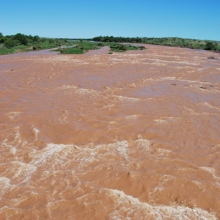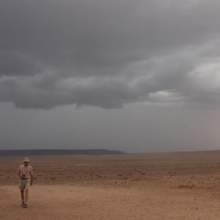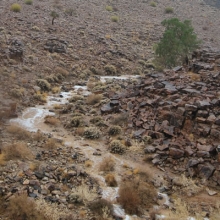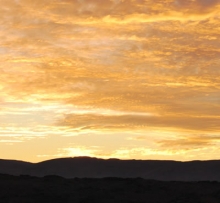Climate
Rainfall
The landscape experiences extremely low rainfall (from less than 120mm in the north to less than 50mm near the Orange River in the south). Rainfall is highly variable and unpredictable with a coefficient of variation of over 70%. It is within the climatic transition zone between winter and summer rainfall and thusthe little rain that does fall can occur at any time of the year, though there is a tendency for the late summer months to receive slightly higher rainfall than other months. The area experiences a water deficit (rainfall minus evaporation) of over 3 m per year.
Rainfall is monitored across the landscape by landscape members. Have a look at the month-by month rainfall records here.
Temperature
Maximum temperatures are exceptionally high (34-45ºC), mainly from December to April, but can be experienced at any time of the year. Average temperatures are moderate (approx. 18ºC) and there is a general temperature decline as one moves westwards towards the Sperrgebiet and coast. There are few frost days per year with an increasing occurrence towards the east (1-5 days per year).
Relevant literature
-
Namibia Climate Change Vulnerability and Adaptation Assessment
Ministry of Environment and Tourism. 2008. Climate Change Vulnerability and Adaptation Assessment Namibia. Final Report
Vulnerability and Adaptation assessment to climate change carried out in preparation of the Second National Communication in meeting Government’s obligations to the UNFCCC. The report addresses the vulnerability of the water and agricultural sectors to climate change, and suggest adaptation measures to cope with the expected impacts. Vulnerability is placed in the socio-economic contexts of rural areas, in particular the Karas and Caprivi regions.» Download -
On the Road to Adaptation: Understanding Climate Change in the Karas Region
NaDEET and NNF, 2010. On the Road to Adaptation: Understanding Climate Change in the Karas Region
This booklet aims to raise awareness about the impacts of climate change for farmers in the Karas Region.» Download







